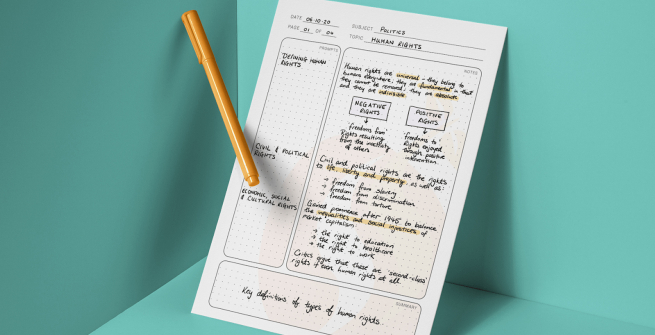Hi! My name is Jason Xie. I’m currently completing my freshman year at Oak Park High School. We just finished reading The Tragedy of Romeo and Juliet by William Shakespeare. In my own free time, I like to catch up on other books, such as Lord of the Flies by William Golding, which I will be reading next year in school.
Whether you’re in third grade or in your junior year of high school, you are probably going to see some form of note-taking. This isn’t limited to English class, either. In fact, you will probably see it in many subjects, ranging from History to Science. Different classes call for different forms of note-taking as well. This involves annotating, Cornell notes, etc.
I will be showing you how I take Cornell notes effectively. Cornell Notes is a studying strategy that helps students simulate critical thinking skills, remember what is taught during lectures and in textbooks, process data and information, and more. Now, in Cornell Notes, students will split the paper into three columns, the cue column, the notes column, and the summary column. To see the organization of these columns, see the image above. When you are in class, write your notes down as bullet points or short sentences in the notes column. Try to shorten your sentences; only write all that is needed to recollect the information you need. After your lecture is over, underline the key vocabulary words and highlight any definitions you find. Highlight especially important information using a separate color. Once you have reviewed your notes, write the keywords or questions they answer in the cue column. Try to use questions with “How” or “Why did…” to deepen your understanding of the material. Once your notes are done, complete your summary, which should reflect your understanding of the material. “How would I explain this information to someone else if I had no time?”.
That’s it! That’s all there is to it. Now that you know how Cornell note-taking works, try to practice utilizing it. When we return to school this fall, you will be able to apply it to your studies. I know it will help you remember the information much better and will definitely improve your studying habits.
Linkedin Learning has a course on the Cornell note-taking method which you can access here, with your library card and pin.
—Written by Jason Xie.
Jason just completed his freshman year at Oak Park High School and is a volunteer at the Studio City Library. He learned a lot his freshman year and was very excited about sharing this functional note-taking process.
—Kelli Lowers, Young Adult Librarian, Studio City Branch
